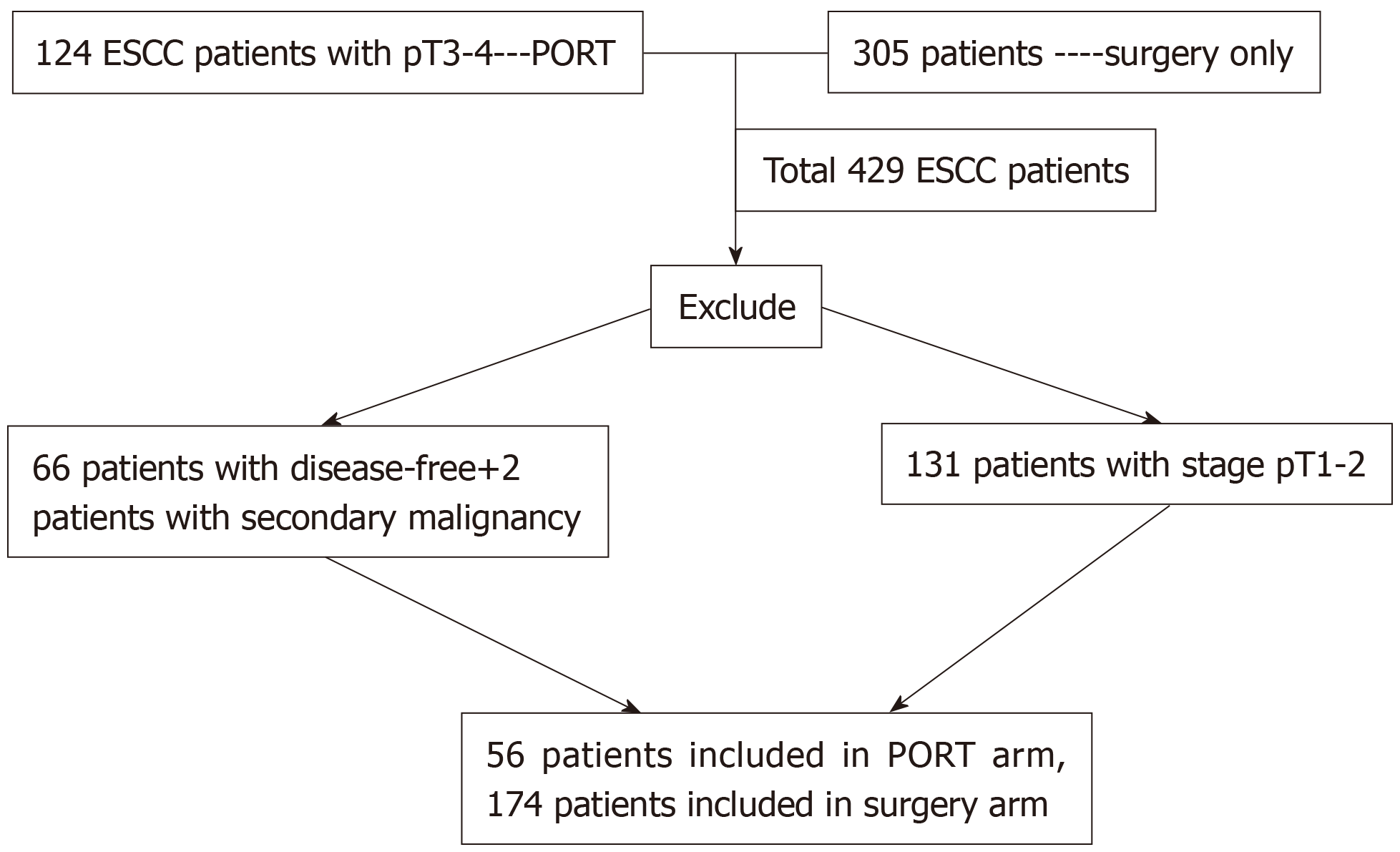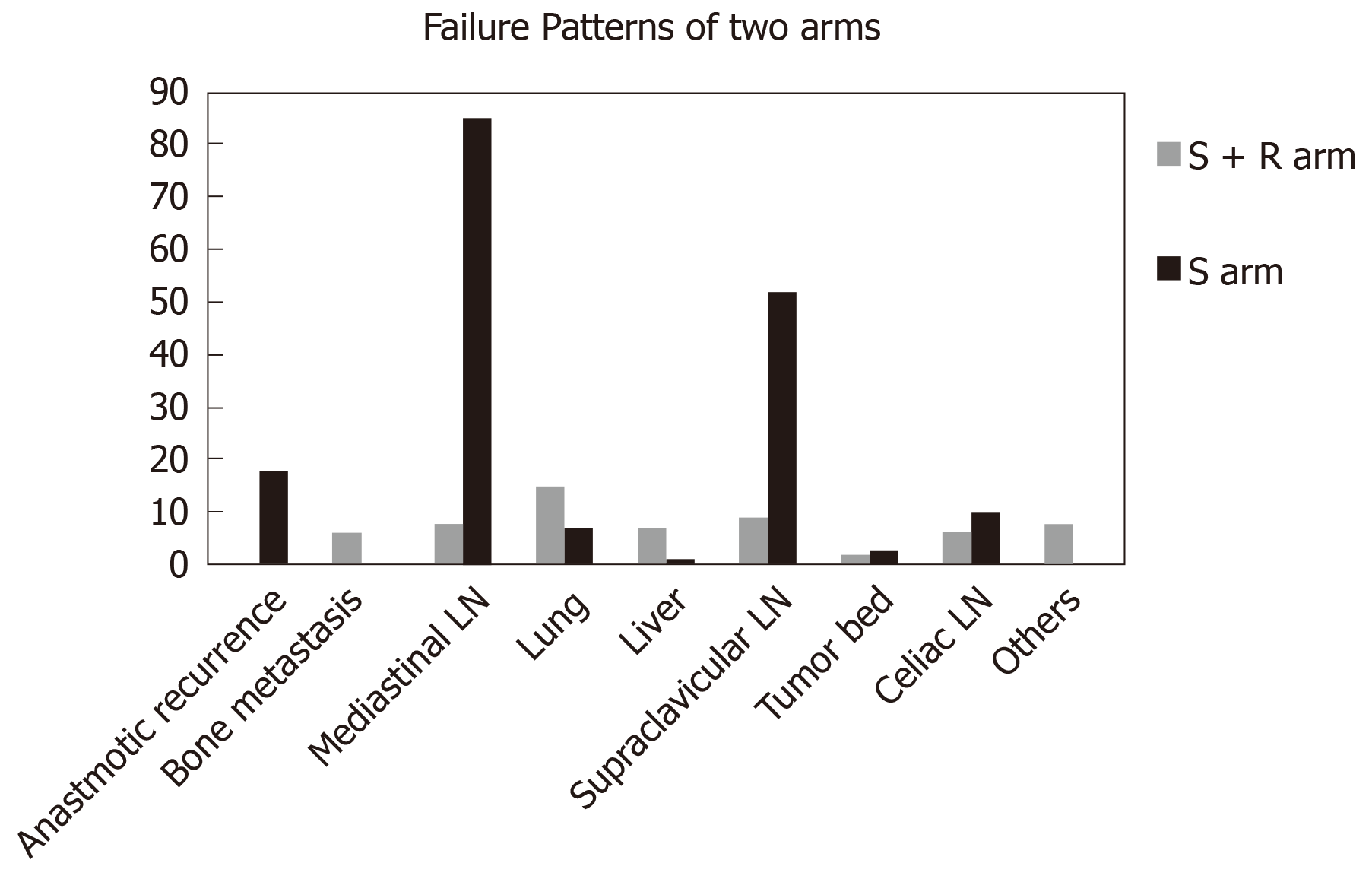Copyright
©The Author(s) 2019.
World J Gastrointest Oncol. Dec 15, 2019; 11(12): 1172-1181
Published online Dec 15, 2019. doi: 10.4251/wjgo.v11.i12.1172
Published online Dec 15, 2019. doi: 10.4251/wjgo.v11.i12.1172
Figure 1 Patient selection flow chart.
ESCC: Esophageal squamous cell carcinoma; PORT: Postoperative radiotherapy.
Figure 2 Details of the failure patterns for the two arms.
The Y axis represents the number of patients. The most common regions for locoregional recurrence were the supraclavicular and mediastinal lymph nodes (29.5% and 48.3%, respectively) for the surgery cohort. For the S + R arm, supraclavicular lymph nodes (9 of 17 patients) were the most common relapse region after postoperative radiotherapy.
Figure 3 Disease-free survival (174 vs 56) of patients in the two arms.
The Y axis represents disease-free survival (DFS) rate. The median DFS rates of the S and S + R arm were 8.0 and 12.7 mo, respectively.
Figure 4 Univariate analysis.
The Y axis represents disease-free survival rate. Patients with fewer than two lymph nodes involved could achieve a better disease-free survival.
- Citation: Zeng Y, Yu W, Liu Q, Yu WW, Zhu ZF, Zhao WX, Liu J, Wang JM, Fu XL, Liu Y, Cai XW. Difference in failure patterns of pT3-4N0-3M0 esophageal cancer treated by surgery vs surgery plus radiotherapy. World J Gastrointest Oncol 2019; 11(12): 1172-1181
- URL: https://www.wjgnet.com/1948-5204/full/v11/i12/1172.htm
- DOI: https://dx.doi.org/10.4251/wjgo.v11.i12.1172












